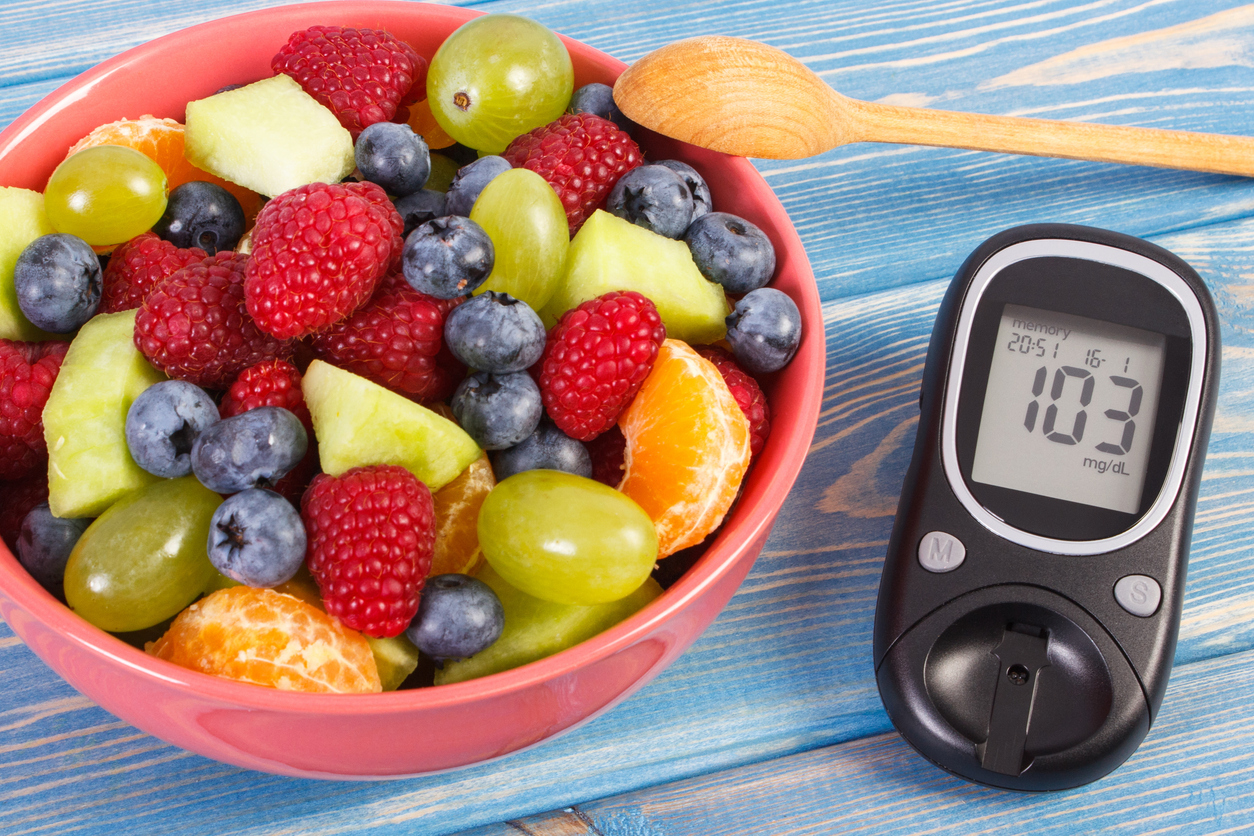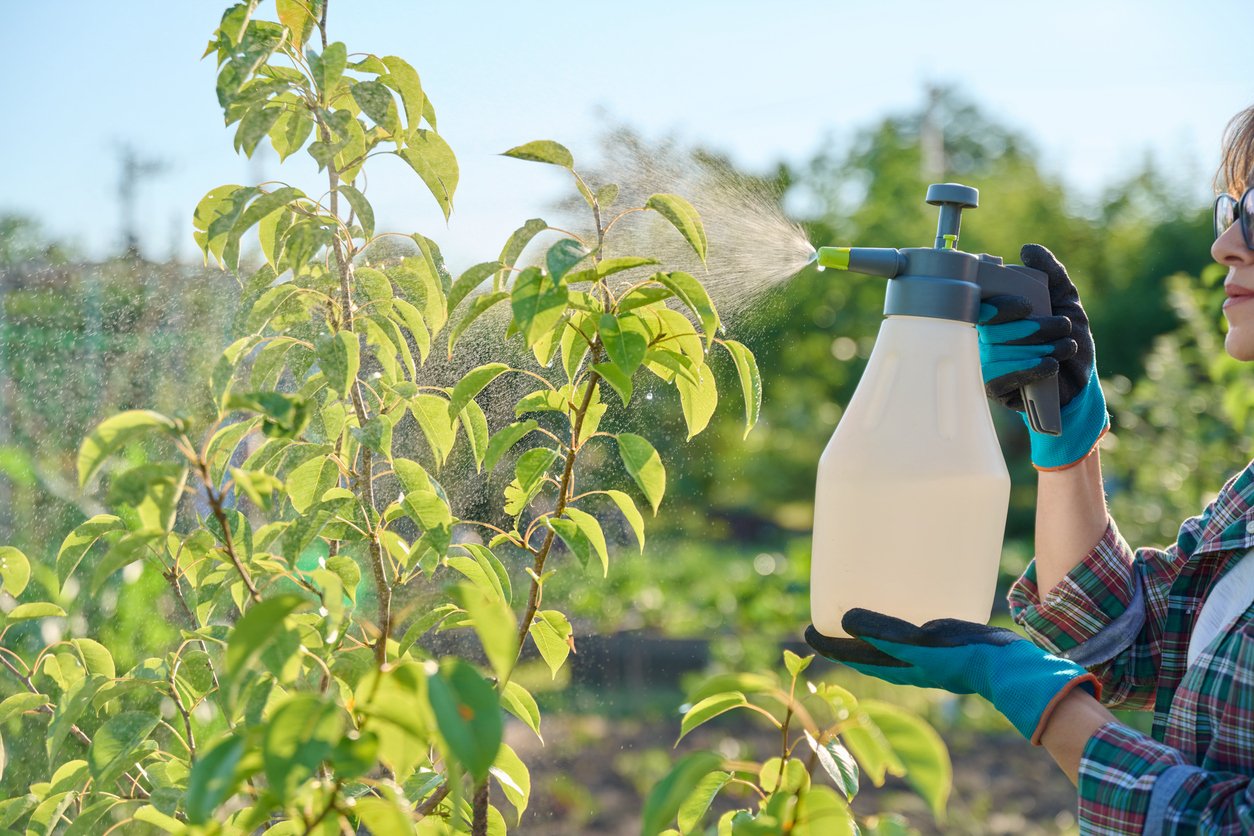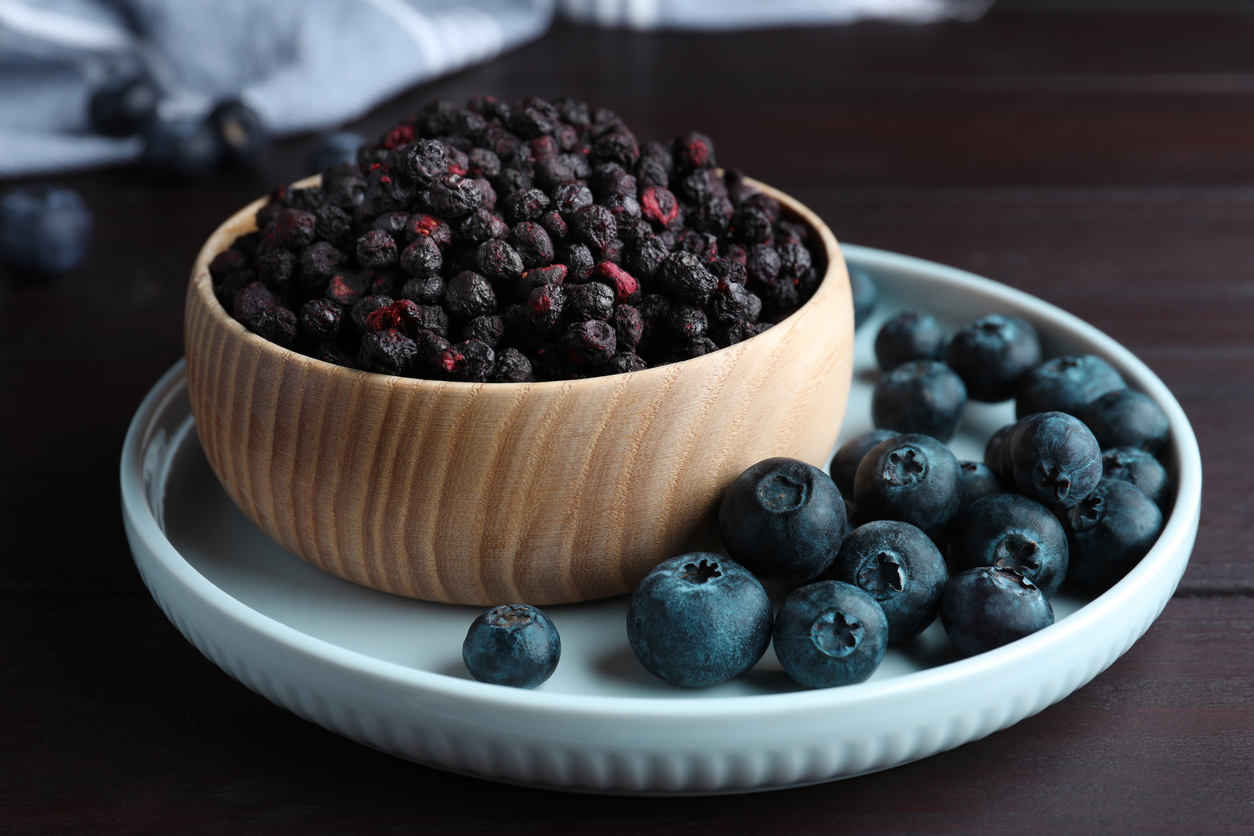If you’ve been following the buzz around blueberries, you might think they’re the unsung heroes of the fruit world — the true MVPs of the breakfast table. In fact, the hype has gotten so intense that one comedian quipped she didn’t need therapy; she just needed a bowl of blueberries!
But all jokes aside, there’s more to these little berries than just clever one-liners. Blueberries really do have impressive nutritional credentials, particularly their rich antioxidant content that gives them their deep blue hue.
These berries have been a part of North American diets for centuries, long before they graced the aisles of your local grocery store. Indigenous peoples have traditionally harvested wild blueberries as a food source and for medicines and dyes.
While all blueberries have tremendous health benefits, wild blueberries might have the most — delivering up to double the antioxidants of other varieties. However, while some wild blueberries are still harvested in certain regions, the vast majority of blueberries produced today come from cultivated varieties.
Commercial blueberry production as we know it only started near the beginning of the 20th century when botanists and growers in New Jersey figured out how to cultivate the bushes (the trick they eventually discovered was acidic, sandy soil). And with the advent of refrigeration and motorized transportation, the highly perishable berries could now travel the world.
Types of Blueberries

Blueberries are native to North America and grow wild in the northern US and parts of Canada. Today, there are five main types of blueberries, most of which are grown commercially worldwide. They all have slightly different flavor profiles and climate preferences.
Human-selected cultivars include northern highbush, southern highbush, rabbiteye, and half-high. The wild variety, lowbush, is relatively rare, as it can’t be propagated from seed. It’s stewarded and harvested mainly in Maine and Quebec.
Northern highbush is the most common type of blueberry. It’s what you’re likely to find in supermarkets and grocery stores. The plant is so popular that over 50 cultivars of northern highbush blueberries have been developed.
Southern highbush is a hybrid blueberry plant that combines the fruit quality and productivity of the highbush family with a longer growing season.
Rabbiteye blueberry bushes were cultivated from wild varieties native to the southeastern US. Their darker blue fruit has more prominent seeds, thicker skins, and a grittier texture than other cultivars.
Half-high is a hybrid of wild and highbush blueberry varieties. It can withstand colder temperatures than highbush plants and produces medium- to large-sized berries.
The wild or lowbush blueberry varieties that still grow in colder climates in North America produce fruits that are about half the size of cultivated blueberries and are primarily available frozen.
Blueberry Nutrition
It turns out that the hype about the nutritional value of blueberries is based on sound science. Both cultivated and wild blueberries are good sources of vitamins, fiber, and minerals. They’re high in B vitamins and the minerals copper, manganese, and zinc. Wild blueberries, in particular, are one of the few fruits relatively high in iron.
Furthermore, all blueberries are excellent sources of a class of phytonutrients called polyphenols. They’re especially rich in flavonoids, principally anthocyanins (which give blueberries and other blue or purple fruits and vegetables their rich hue). Wild blueberries generally have higher concentrations of nutrients and more potent antioxidants.
Benefits of Blueberries
Blueberries can benefit our health so much that they’ve earned the moniker “superfood.” There’s good evidence showing that blueberries can support brain, heart, and skin health, fight cancer, help prevent and manage type 2 diabetes, and combat systemic inflammation and oxidation reactions throughout the body.
Blueberries and Brain Health

The polyphenols in blueberries have been shown to postpone brain aging and combat neurodegenerative diseases like Parkinson’s and Alzheimer’s, likely due to their potent antioxidant and anti-inflammatory effects.
How much can they postpone aging and dementia? Well, in 2012, a team of researchers, including some from Harvard Medical School, found that eating more blueberries and strawberries was associated with the addition of up to two and a half years of healthy brain function.
Blueberries can also help with cognition. A 2018 study found that feeding older adults freeze-dried blueberry powder for 90 days helped them perform better on a couple of cognitive tests compared to those randomly assigned to consume a placebo.
It’s not just older adults whose brains could benefit from blueberries. A 2021 study looked at the effects of four weeks of daily wild blueberry consumption on the cognitive abilities of healthy 7- to 10-year-olds. Researchers found that the children who got blueberries scored significantly better on a test of executive function, which is crucial for problem-solving, decision-making, and managing everyday tasks effectively.
Blueberry Heart Benefits
Eating blueberries can help protect your heart by improving your blood vessel function. This includes making them less stiff and helping them balance contraction, relaxation, flow, and clotting. Blueberries seem to do this by reducing oxidative stress and inflammation throughout your body, and benefiting your gut bacteria, which in turn can positively impact your blood vessels.
A six-month trial involving 115 people with metabolic syndrome divided participants into three groups: one eating a single cup of blueberries daily, another eating half a cup, and a placebo group (“no blueberries for you!”). The group consuming the single cup of blueberries showed improved blood vessel function, reduced arterial stiffness, and increased “good” HDL cholesterol levels.
Blueberry Skin Benefits

Environmental stressors like pollution, cigarette smoke, and ultraviolet light can prematurely age skin through reactive oxygen species (ROS) in the body. Blueberries are rich in compounds called polyphenols, including flavonoids like anthocyanin, which act as superstar antioxidants in the body. These flavonoids scavenge ROS and keep them from damaging skin tissue.
A 2020 study looked at the effects of a topical blueberry extract (think cosmetics, but hopefully, they don’t turn your skin blue like Violet Beauregarde in Willy Wonka) on human skin. Researchers found that the blueberry extract helped wounds heal faster, reduced inflammation, and prevented harmful reactions in the skin.
Blueberries and Cancer
A 2021 study examined the effects of a polyphenol-enriched blueberry preparation on breast cancer cells. It found that it decreased cancer-promoting molecules and proteins and increased tumor-suppressing molecules and proteins, which suggests that blueberries may help prevent and slow the progression of breast cancer.
A 2023 study found that fermentation increases certain helpful compounds in blueberries. They tested a mix of these compounds on breast cancer cells and mice with tumors (our view on the use of animals in medical research is here). The treatment reduced the formation of cancerous cell clusters and decreased lung metastases in mice. They also found an increase in a specific molecule named miR-145, which is linked to cancer prevention.
Also, in 2023, researchers discovered that the anthocyanins in Gardenblue blueberries could slow the growth of several types of cancer cells, including those from the cervix, liver, breast, and lungs. The compound appeared to work by disrupting the DNA within the cancerous cells, preventing them from spreading and leading to self-destruction.
What’s more, when combined with common cancer drugs like cisplatin and doxorubicin, those anthocyanins became super effective against liver cancer cells, needing only a tiny amount to make a big difference.
Blueberries and Diabetes

The phytochemicals in blueberries can help lower blood sugar and improve insulin sensitivity. This makes blueberries useful not only for managing type 2 diabetes but also for addressing issues that arise early in prediabetes, such as problems with gut bacteria and liver metabolism.
In 2020, researchers gave older men with type 2 diabetes either freeze-dried blueberries or a placebo for eight weeks. By the end of the study, they found that HbA1c (a key measure of long-term blood sugar) and fructosamine levels were significantly lower in the blueberry group.
A 2021 study also found that when sedentary people were given blueberries and white bread, their blood sugar didn’t rise as much as when they just had the bread.
Potential Considerations and Downsides
While blueberries are awesome, there are some things to keep in mind before upping your consumption.
Blueberry Allergies
While eating blueberries won’t cause you to blow up like Violet Beauregarde, if you have a blueberry allergy (they’re rare but not nonexistent) or suffer from oral allergy syndrome, you may experience symptoms like swelling of the tongue and throat, rashes or itchy skin, wheezing, difficulty breathing, or tingling of the hands and feet.
Pesticides on Blueberries

Another potential downside of eating blueberries is the amount of pesticides that are sprayed on them. Blueberries are on the Environmental Working Group’s “Dirty Dozen” list due to both the number and toxicity of the pesticide residues found on conventionally grown berries.
Researchers who tested cultivated blueberries found that 80% of samples contained more than one pesticide, including two organophosphates which have been banned in the EU and may cause nerve damage.
Wild blueberry growers rely heavily on Integrated Pest Management (IPM) strategies to manage typical weed, insect pest, and disease pressures. IPM often includes pesticides but typically fewer and in lower concentrations.
If possible, choose organic blueberries for your health, the environment, and the health of the farmworkers who weed and harvest your berries.
And if you can’t go organic, you can still reduce your pesticide exposure from blueberries by cleansing them before eating. The most effective method turns out to be 12–15 minutes of soaking in 1 part baking soda to 100 parts water.
For our comprehensive article on how to wash vegetables and fruits to remove pesticides, click here.
The Environmental Impact of Blueberries
Because they are often grown with fertilizer and require irrigation, blueberry bushes take some toll on the environment. Wild blueberries may have a more sustainable cultivation process, mainly because the soil does not have to be dug up or disturbed to plant new bushes.
The Passamaquoddy Tribe of Indian Township, Maine, has long employed sustainable practices to ensure the longevity of wild blueberry plants. Researchers and farmers are also beginning to adopt AI technologies to identify and manage weeds more effectively in wild blueberry fields, which can reduce herbicide use.
Perhaps the biggest environmental impact of blueberries, however, comes from transportation. Air transport is often used to deliver fresh blueberries to distant markets quickly, but this convenience comes at a cost. The carbon footprint of flying fruit is about 50 times higher than that of land or sea transportation, contributing to greenhouse gas emissions and climate change. This raises concerns about the sustainability of consuming out-of-season or non-local blueberries, especially in regions far from where they’re grown. Fortunately, frozen blueberries have a much smaller carbon footprint because they don’t depend on airplanes to move them around.
A Note About Frozen vs Fresh Blueberries

For most people worldwide, frozen blueberries are a better option than fresh. Unless you live in North or South America, and it happens to be blueberry season, frozen blueberries are far easier to access, cost less, and have a much smaller environmental footprint than fresh ones that might have been transported from thousands of miles away. Frozen berries can often save you money while being more sustainable for the planet. And they appear to have all the same health benefits as fresh blueberries. Plus, they’re less likely to get moldy sitting in the back of the refrigerator!
Enjoy Blueberries’ Powerful Health Benefits!
Blueberries are true nutritional powerhouses packed with antioxidants, vitamins, and minerals. Whether you prefer the robust flavor of wild blueberries or the plump, juicy cultivated varieties, both types offer a plethora of health benefits. From boosting brain and heart health to providing anti-inflammatory and anticancer properties, blueberries are a delicious and versatile addition to any diet.
Tell us in the comments:
- Do you eat blueberries? What are your favorite ways to consume them?
Featured Image: iStock.com/Kativ



